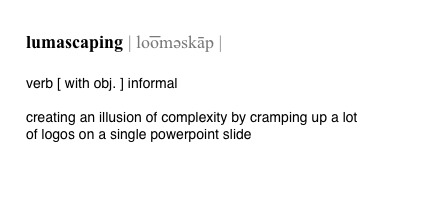Room Full of Money: The Realities Of Media Trading
by Ciaran O'Kane on 4th Feb 2013 in News


Mikko Kotila is Founder & CEO at STATSIT.
The advertising industry is huge. Currently at half a trillion dollars it earns its place amongst world’s largest industries, with the likes of pharma.
People tend to overlook the magnitude when they’re evaluating the programmatic media trading opportunity. Google estimates that online display advertising will be an US$200 billion industry by 2020. I assume that includes all screens, social, apps, and the whole lot.
Let’s say we really are going to see an average 20% per annum increase in investment and the share of exchange trades out of the total investment grows 5% per year. In that scenario, there will be US$350 billion worth of online display exchange trading taking place in the next 8 years.
As most already know, TV is next. Australia is already taking surprisingly unified steps towards a TV exchange. No doubt out-of-home digital, and eventually every other advertising medium will follow. We can easily grasp the tremendous size of the coming media trading tsunami by adding a zero to the online display figure.
The Industry is Smaller (scale) and Simpler (complexity) Than You Think
The lumascape gets flashed around a lot. Industry publications keep repeating how the adtech industry is overly complex. This is the kind of communication we want to avoid.
Making a sandwich in your kitchen, think about all the players that contribute to the finished product. From floor tiling adhesive to the peanut butter of your choice. In my opinion, lumascaping is adding more complexity to our industry than we need.
The other problem is rocket scientists. For an adtech company, generally speaking it’s not a benefit to have your Chief Scientist coming from Astro Physics. The problem with rocket science is that it’s really complicated. Sending stuff to the moon for example, is really complex stuff.
While some may like to think so, showing ads to web surfers is nowhere near as complex as rocket science. Showing one ad once to one user on one site is actually trivial. It’s the scale and number of involved players that make it complex. Yet it’s not the same kind of complexity as you would encounter in advanced particle physics where nothing is simple.
In a recent article by RTBInsider on Auction Marketplaces, the writer compares ad exchanges to stock exchanges in terms of scale by comparing AppNexus’ publicly stated QPS (queries per second) of 50 billion queries per day to NASDAQ which executes 2 billion trades per day.
This comparison is an example of what we have to avoid as an industry. First, AppNexus QPS number is not likely to reflect the number of auctions, as one auction most likely involves many queries as there are many parties involved. Furthermore, it's likely that processing each party's request involves more than one query.
To say that AppNexus alone deals with over 50 billion "trades" per day is just wrong, as that would mean over one trillion "trades" per month. That is probably somewhere closer to the size of the whole ad exchange eco-system globally.
If you look at the 2 billion trades executed in NASDAQ per day, more goes in to that than meets the eye. The High-Frequency-Trading (HFT) guys often rely on tactics that create noise. Sometimes resulting in tens of thousands of “queries” per executed trade.
Another important point is how "business critical" AppNexus trades are compared to NASDAQ trades. Knight Capital lost US$400million in one programmatic trading glitch. That’s probably more than all the earnings made from programmatic ad trading in 2012. So while we may think that we’re like Wall Street, we’re not. At least not before we figure out how to introduce derivatives and leverage in to the mix. Which I’m hoping we won't.
Keeping It Simple
For the time being, we have to focus on developing our industry as what it really is; relatively simple technology with a scale very much manageable in the modern day.
Currently we can deliver value to clients without dramatic scale, and earn proportionally more as the scale grows. It’s a much better system than the HFT landscape of near zero margins where earnings come from crippling leverage and staggering scale.
All of this is good news for adtech. While it sounds sexy as hell, working with rocket scientists is no fun. Let’s stop pretending we want adtech to be rocket science, and our scale bigger than Wall Street. We don’t want that. We want to understand how our solutions work, and we want to keep infrastructure cost as low as possible.
Once the dust has settled and all of this has become a commodity, our common interest for money will remain. The choices we now make will largely decide on how easy or difficult it will be to keep making the money in the future.
Follow Mikko Kotila on twitter (@mikkokotila).
APACExchangeProgrammaticTrading









Follow ExchangeWire